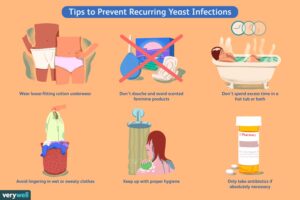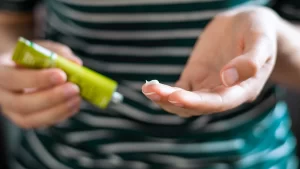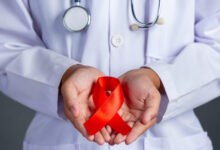How To Treat And Heal Yeast Infection Sores/Cuts
What Causes Vaginal Cuts, and How Are They Treated?

Dealing with yeast infection sores or cuts can be uncomfortable, but with the right care and treatment, you can heal quickly and prevent future issues.
Yeast infections are common, and knowing how to manage the symptoms effectively is essential for your comfort and health. Here’s a simple guide on how to treat and heal yeast infection sores and cuts.
Understanding Yeast Infection Sores and Cuts

Yeast infections are caused by an overgrowth of Candida, a type of fungus that naturally lives in the body. When this fungus grows out of control, it can lead to an infection, often in warm, moist areas like the mouth, armpits, and genitals. Sometimes, the infection can cause sores or cuts, which can be painful and irritating.
- Causes of Yeast Infection Sores: These sores or cuts are often the result of scratching the infected area, which can damage the skin and make it more susceptible to injury. The infection itself can also cause the skin to crack and become sore.
- Symptoms to Watch For: Yeast infection sores usually appear as small, red, and sometimes oozing patches of skin. They can be itchy, painful, and may take time to heal if not treated properly.
- Simple Cuts and Healing Time: Superficial or simple vaginal cuts typically heal within a week or so. They don’t usually leave any lasting marks or result in any long-term complications. If your symptoms haven’t improved after a few days, it’s important to consult a healthcare professional.
Causes and Self-Assessment of Vaginal Cuts

It’s not unusual to develop cuts in the vaginal area after penetrative sexual activity. In many cases, these cuts can heal on their own. Certain conditions can also make you more susceptible to tears or scrapes in this area.
- What Causes Superficial Vaginal Cuts?: Everyday activities like shaving, internal menstrual products, and penetrative masturbation or partner sex can cause simple vaginal cuts, also known as microtears. These kinds of cuts usually heal within a couple of days.
- How to Assess Your Symptoms: Vaginal cuts are often accompanied by feelings of discomfort, especially during urination, and minor bleeding. To properly treat it, you must look at how deep the cut is and determine whether other symptoms, such as pus, are present. The best way to assess your symptoms is to use a mirror to examine the area or gently touch the affected area after washing your hands.
Start with Proper Hygiene

Good hygiene is the first step in treating yeast infection sores and cuts. Keeping the affected area clean and dry can help prevent the infection from worsening and promote faster healing.
- Gentle Cleaning: Wash the affected area gently with warm water and mild, unscented soap. Avoid using harsh soaps or scrubbing the area, as this can further irritate the skin. Pat the area dry with a clean towel—don’t rub it.
- Stay Dry: Yeast thrives in moist environments, so it’s crucial to keep the area dry. After washing, make sure to dry the area thoroughly, and avoid wearing tight, non-breathable clothing that can trap moisture.
Use Over-the-Counter Antifungal Creams

Antifungal creams are widely available and can effectively treat yeast infections and soothe sores and cuts. These creams help to stop the growth of yeast and promote healing.
- Apply as Directed: Follow the instructions on the antifungal cream packaging. Typically, you’ll need to apply the cream directly to the affected area once or twice a day for several days.
- Choose the Right Cream: Look for creams that contain ingredients like clotrimazole, miconazole, or terbinafine. These are specifically designed to treat fungal infections and are safe to use on sensitive areas.
Treating Superficial Vaginal Cuts

If the cut is superficial, you can follow these steps to promote healing:
- Wash the Area: Clean the area with warm water once or twice per day, avoiding harsh or perfumed soaps.
- Keep it Dry: Make sure the area is dry before getting dressed, and opt for cotton underwear and loose bottoms until it’s healed.
- Pain Relief: If discomfort is severe, take an over-the-counter (OTC) pain reliever like ibuprofen (Motrin, Advil) or acetaminophen (Tylenol).
- Topical Treatment: If the cuts are external, around the vaginal opening or on the inner or outer labia, you can apply a topical antibiotic like Bacitracin or a barrier ointment such as Aquaphor to help soothe and heal the area.
Natural Remedies to Soothe the Skin

In addition to antifungal creams, you can use natural remedies to soothe your skin and speed up healing. These remedies can help reduce itching and discomfort while your body fights off the infection.
- Coconut Oil: Coconut oil has natural antifungal properties and can be applied directly to the sores. It helps moisturize the skin, reduce itching, and promote healing.
- Aloe Vera Gel: Aloe vera is known for its soothing properties and can be applied to the affected area to calm irritation and promote healing. Make sure to use pure aloe vera gel without added fragrances or chemicals.
- Tea Tree Oil: Tea tree oil has strong antifungal and antibacterial properties. Dilute a few drops of tea tree oil with a carrier oil, like coconut oil, and apply it to the sores. Be sure to do a patch test first, as tea tree oil can be irritating to some people.
When to See a Doctor

While most yeast infections and superficial cuts can be treated at home, there are times when you should seek medical advice. If your symptoms persist, worsen, or you develop a fever, it’s time to consult a healthcare professional.
- Persistent Symptoms: If the sores or cuts don’t start to heal after a week of treatment, or if they keep coming back, you may need a stronger prescription medication.
- Deeper Cuts or Mystery Causes: If the cut is deeper than a scrape and the cause is unknown, it’s important to seek medical advice. Hormone imbalances, chronic skin conditions, or vitamin deficiencies could be the underlying cause, and a healthcare professional can help determine the appropriate treatment.
Deep Vaginal Cuts

Deep cuts in and around the vagina often result from childbirth or traumatic events like sexual assault. These wounds need immediate medical attention and should not be left to heal on their own.
- Post-Childbirth Care: If a tear has reopened or a new tear has occurred after childbirth, seek immediate medical attention. Follow your healthcare provider’s instructions for rinsing the area, wearing menstrual pads, and taking OTC pain relievers.
- After Sexual Assault: If you’ve experienced sexual assault, consult a trained healthcare professional. They can assess your symptoms, provide necessary treatment, and offer support. Organizations like RAINN offer anonymous, confidential support through their 24/7 hotline.
Preventing Future Yeast Infections and Cuts

Preventing yeast infections and cuts is the best way to avoid discomfort and complications. By making a few lifestyle changes, you can reduce your risk of future issues.
- Maintain Good Hygiene: Keep your skin clean and dry, avoid harsh soaps, and wear loose, breathable clothing.
- Boost Your Immune System: A strong immune system can help keep yeast in check. Eat a balanced diet, get regular exercise, and manage stress to keep your body healthy.
- Consider Probiotics: Probiotics can help balance the bacteria in your body, which can prevent yeast overgrowth. You can find probiotics in foods like yogurt, kefir, and sauerkraut, or in supplement form.
Conclusion: Healing and Prevention
Treating and healing yeast infection sores and cuts involves a combination of good hygiene, proper treatment, and natural remedies.
Superficial vaginal cuts usually heal within a week or so, but if your symptoms haven’t improved after a few days, make an appointment with a healthcare professional.
By following these tips and being mindful of your body’s needs, you can heal quickly and reduce the risk of future infections.
Remember, your health and comfort are important, and with the right care, you can get back to feeling your best.









